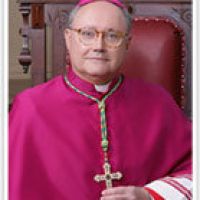One of the better Catholic Journalist in Europe has a very interesting piece both on the Scientific test done on St Paul's Body and the oldest Image of him found. New Discoveries. Why St. Paul Was Given a Philosopher's Face
This part is very interesting and I quote the part dealing with the image.
The second discovery was announced by "L'Osservatore Romano" in its June 28 edition.It is the discovery of the oldest known depiction of the apostle Paul, dating back to the fourth century: the depiction reproduced at the top of this page.
This image of Paul emerged last June 19, from the excavations that are underway in a catacomb named after St. Thecla, along the Via Ostiense leading from Rome to the sea, a short distance from the basilica of the apostle.Using laser beams to clean the vault of a niche, the archaeologists saw a rich fresco decoration reemerge.
At the center of the vault appeared the image of the Good Shepherd, surrounded, in four arches, by the figures of Paul - the best preserved of the four - of Peter, and probably of two other apostles.The archaeologists Fabrizio Bisconti and Barbara Mazzei provided all of the details of the discovery in two extensive accounts in the newspaper of the Holy See. But one element is more striking than all the rest. And it concerns the reasons that led to depicting the apostle Paul as we see him in this fresco, and then in so many others that followed: with the appearance of a pensive philosopher, with the penetrating expression, the high forehead, the incipient baldness, the pointed beard.
In effect, in an art exhibition dedicated to St. Paul and inaugurated a few days ago in a wing of the Vatican Museums, two of the pieces on display are busts made in the Roman era, of two philosophers - one of which is probably Plotinus - who bear a strong resemblance to the ancient depictions of Paul, beginning with the one that has just been discovered.
The same question is posed for the apostle Peter, who is traditionally depicted with short, thick white hair, his face broad and his expression decisive, his beard also short and full. And so on for other characters of sacred history.Portraiture was very widespread in Greek and Roman art. But in Jewish culture, human images were forbidden, and therefore it was unthinkable that Paul and the others would have themselves depicted. It was only later that the Church accepted the depiction of figures of the Christian faith.
But how?
Here is the evocative explanation given by Professor Antonio Paolucci, director of the Vatican Museums and a great art historian, in presenting the exhibition on St. Paul:"The problem was posed between the third and fourth centuries, when a Church that had become widespread and well structured made the great and brilliant wager that is at the basis of our entire artistic history. It accepted and made its own the world of images, and accepted it in the forms in which the Greco-Roman stylistic and iconographic traditions had developed it.
It was in this way is that Christ the Good Shepherd took on the appearance of Pheobus Apollo or Orpheus, and that Daniel in the lion's den had the appearance of Hercules, the victorious nude athlete."But how could one represent Peter and Paul, the princes of the apostles, the pillars of the Church, the foundations of the hierarchy and doctrine? Someone got a good idea. He gave the first apostles the appearance of the first philosophers.
So Paul, bald, bearded, with the serious and focused air of the intellectual, had the appearance of Plato or perhaps of Plotinus, while that of Aristotle was given to the pragmatic and worldly Peter, who has the task of guiding the professing and militant Church through the snares of the world."If this is what happened, then the Church in the early centuries had no reservations about attributing to the apostles, and to Paul in particular, the title of philosopher, nor of handing down, studying, and proclaiming in its entirety his thought, which is certainly not easy to understand and accept.
The same can be said of the Fathers of the Church. In a phase of Christianity in expansion, in a phase in which the transmission of the Christian faith to the Gentiles was in full development, the Church never considered watering down or domesticating its own message in order to make it more acceptable to the men of the time.
The depiction of Paul the philosopher is an eloquent warning to those who today deny relevance to a pope theologian like Benedict XVI, a modern Father of the Church.
Tuesday, June 30, 2009
Why Christian Figures In Art Look Like they Do (Pauline Discovery Update)
Posted by
James H
at
6/30/2009 02:57:00 PM
![]()
Labels: Catholic, Church Fathers, Pauline Year
Subscribe to:
Post Comments (Atom)















No comments:
Post a Comment